#biotite?
Explore tagged Tumblr posts
Text



mystery rock
#stopdoopyphotos#augite?#biotite?#black rock#rocks#from mineshaft rocks and minerals in comanche oklahoma#minerals#stopdoopy
2 notes
·
View notes
Text
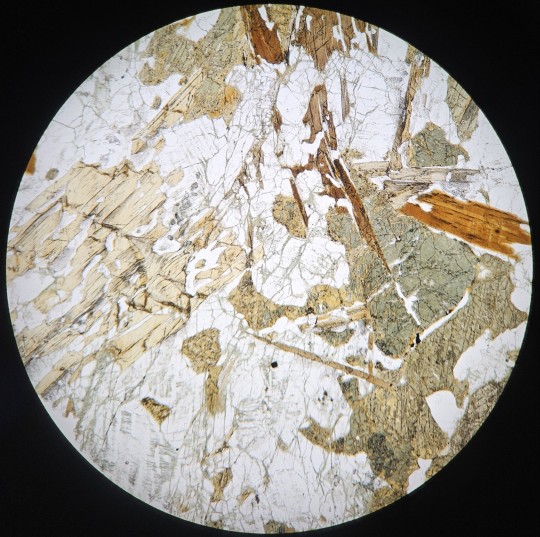
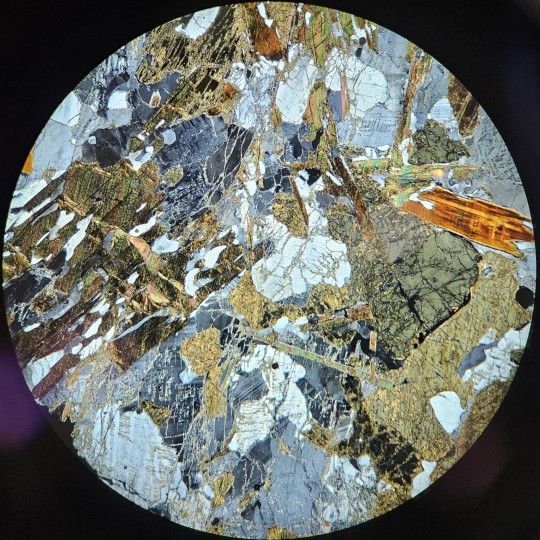
#lots of greens and browns in this batch of thin sections!#hornblende and biotite and chlorite oh my!#plus some quartz and feldspar tossed in for good measure#i have similar pictures set as my lock and home screen#so it looks like i put a polarizer in when I unlock my phone lol#these ones are very texture#very nice to look at#in which cube is a geologist#thin section#geology
33 notes
·
View notes
Photo
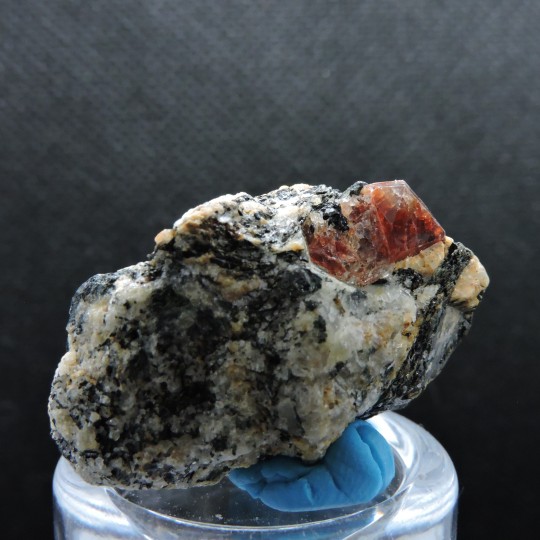



Zircon in Biotite Schist
Locality: Astore Valley, Astore District, Gilgit-Baltistan, Pakistan
#zircon#rock#mineral#gem#crystal#biotite#schist#zircon with biotite#metamorphic#rocks#minerals#fossils#geology#mineralogy#earth#nature#science
161 notes
·
View notes
Text


Zircon Crystal on Biotite Schist, Calcite & Carbonatite Matrix.
https://www.oldearthminerals.com/shop/p/zircon-crystals-wit-biotite-on-matrix-1-aymdw-5rty8-ccdet-fsrpt-9c2x5
#zircon #crystals #crystaltok #minerals #biotite #fluorescentminerals #mineralspecimen
#crystals#crystalhealing#minerals#mineralspecimens#mineralspecimen#mineral#zircon#biotite#fluorescent#fluorescentrocks
15 notes
·
View notes
Note
imagine tumblr using a pestle and mortar like this: https://www.youtube.com/watch?v=6n3ULiBoqBk&t=131s
the video calls it a granite mortar when that is CLEARLY a diorite or at best a granodiorite and is visibly dominated by feldspar and iron bearing phases. lol. lmao.
#maybe brush up on your intrusive igneous composition classifications idiot. fool#not art#ask#icanfeelthethunder#geology#not me saying iron bearing phases and telling on myself for not being able to tell biotite from hornblende unless it’s in thin section#listen if that was a pegmatitic texture i would be on the classification of those dark phases in a heartbeat#but if i see black specks i have no way of avoiding putting my entire foot in my mouth saying it’s one thing and not the other#also if that was pegmatitic it would be a shit mortar#hey babe i made you some pesto. oh what are those black seasoning flecks you ask? silica crystals. eat up butch#bitch*#i hate autocorrect#socialstuck#twitblr
46 notes
·
View notes
Text
oh man oh man i found the most beautiful seam of porphyry (some of it basically glomeroporphyritic) in the dacite-rhyolite mountains behind my parents place! i was out for only two hours and lugged a big heavy piece home with me along with some smaller ones:

look at that huge cryst on the left one.
it has some nice biotite in it as well. it was really fuckin wet (and sweaty!!) though and i just about made it back before it started pouring. looking forward to tomorrow to see how it looks when it dries in the sun
also, looks completely different from the very red dacite (im now thinking that one was more of a rhyolite?) i got from the same area last year, just maybe 100m apart.
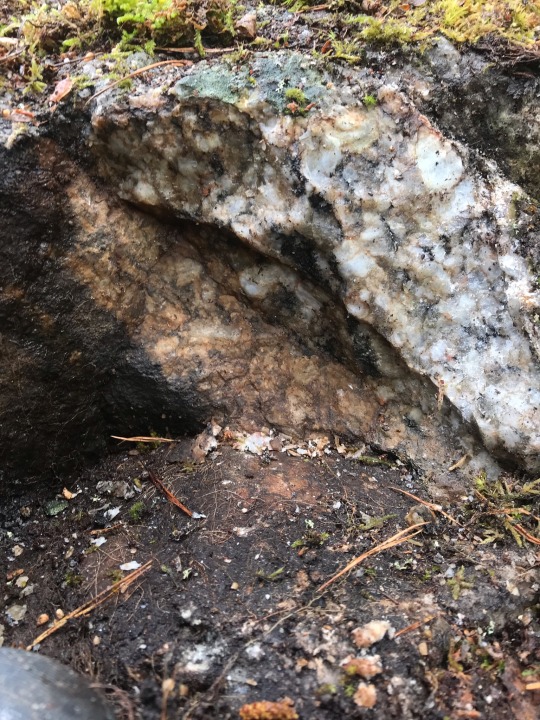
the bedrock it came from. look at those three color shifts, left to right, dark to beige to spotted. this is a magma rich in felsic minerals that probably cooled real slow at first, then got mixed up with a mafic one via plate subduction, heated back up and had a big devastating yellowstone-like eruption ~1,9 billion years ago. add some tectonic drift, accretions, isostatic rebound, then some magma intrusions.
32 notes
·
View notes
Text
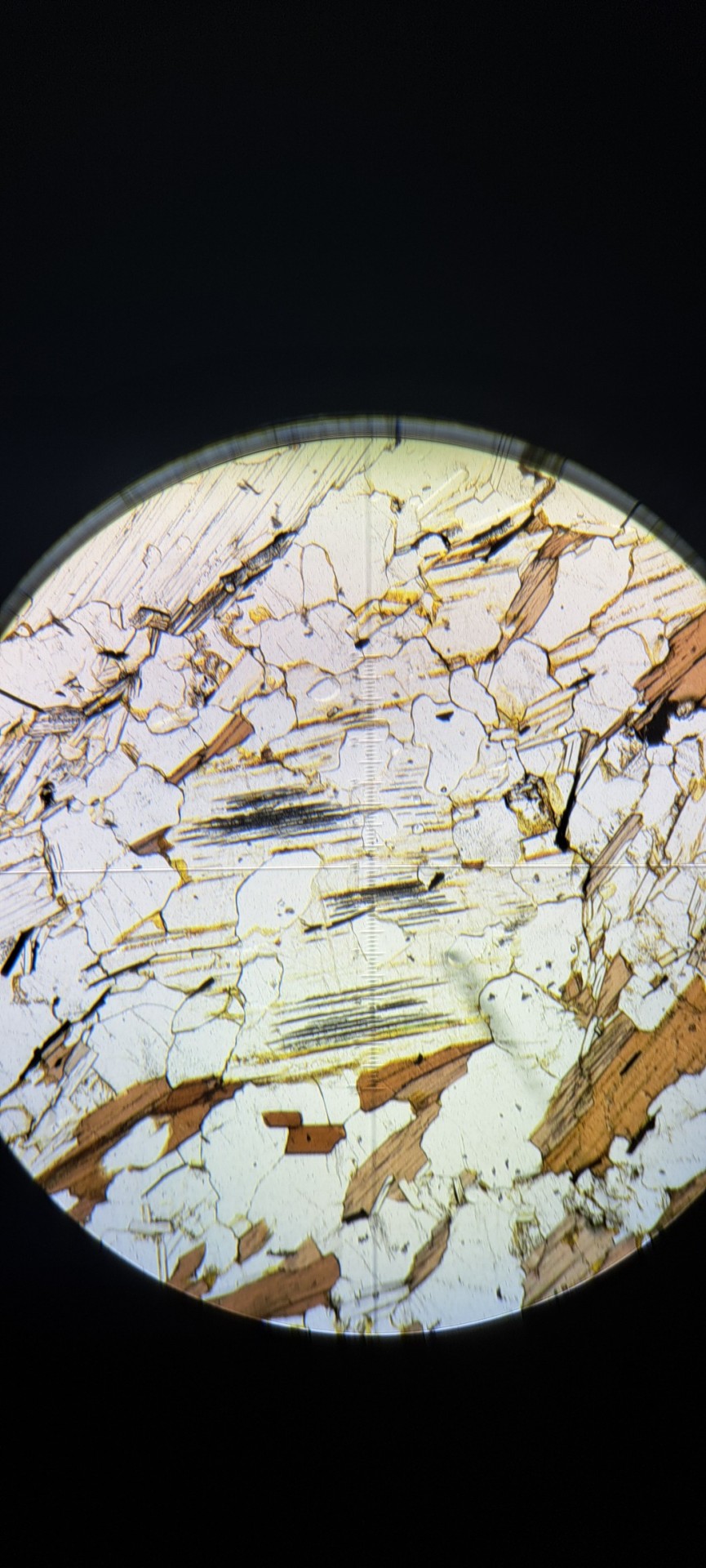
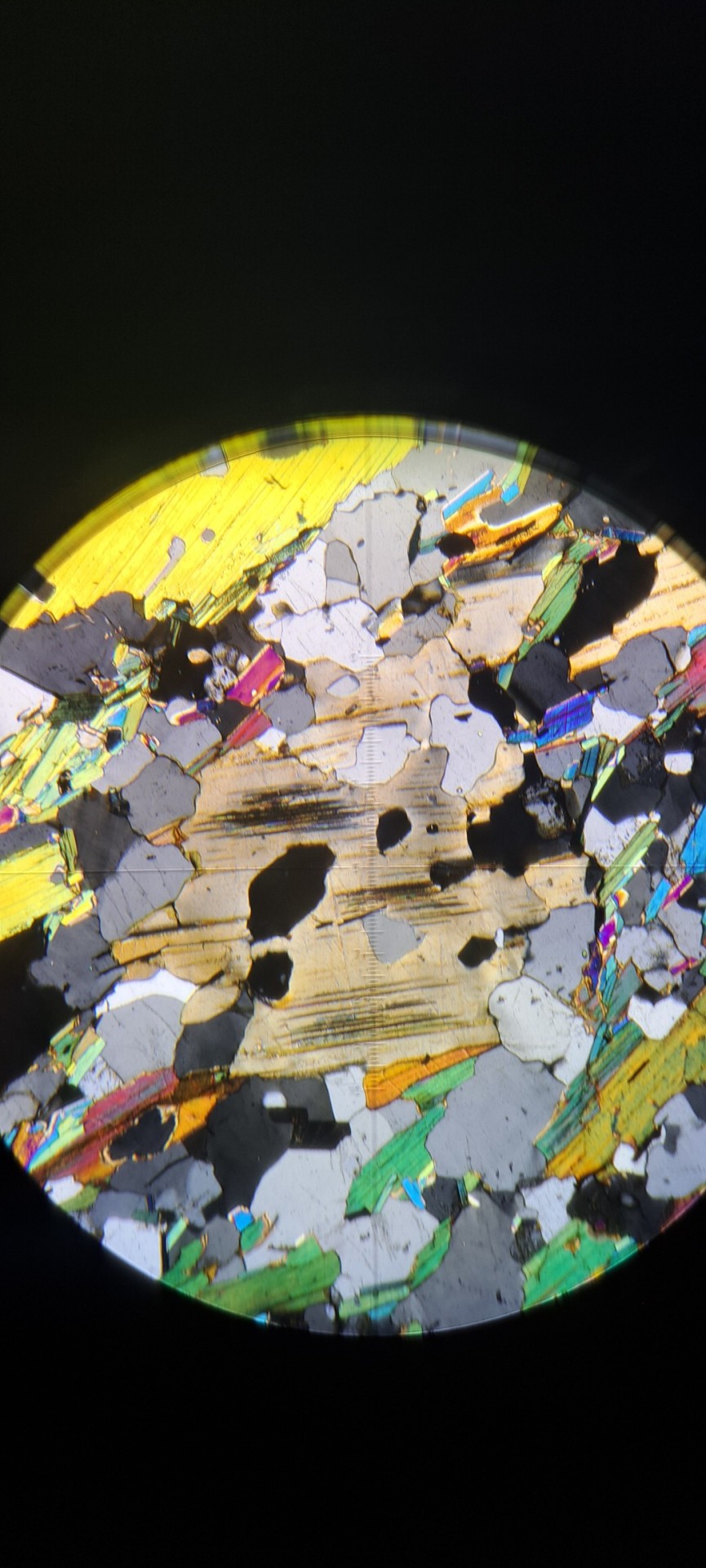
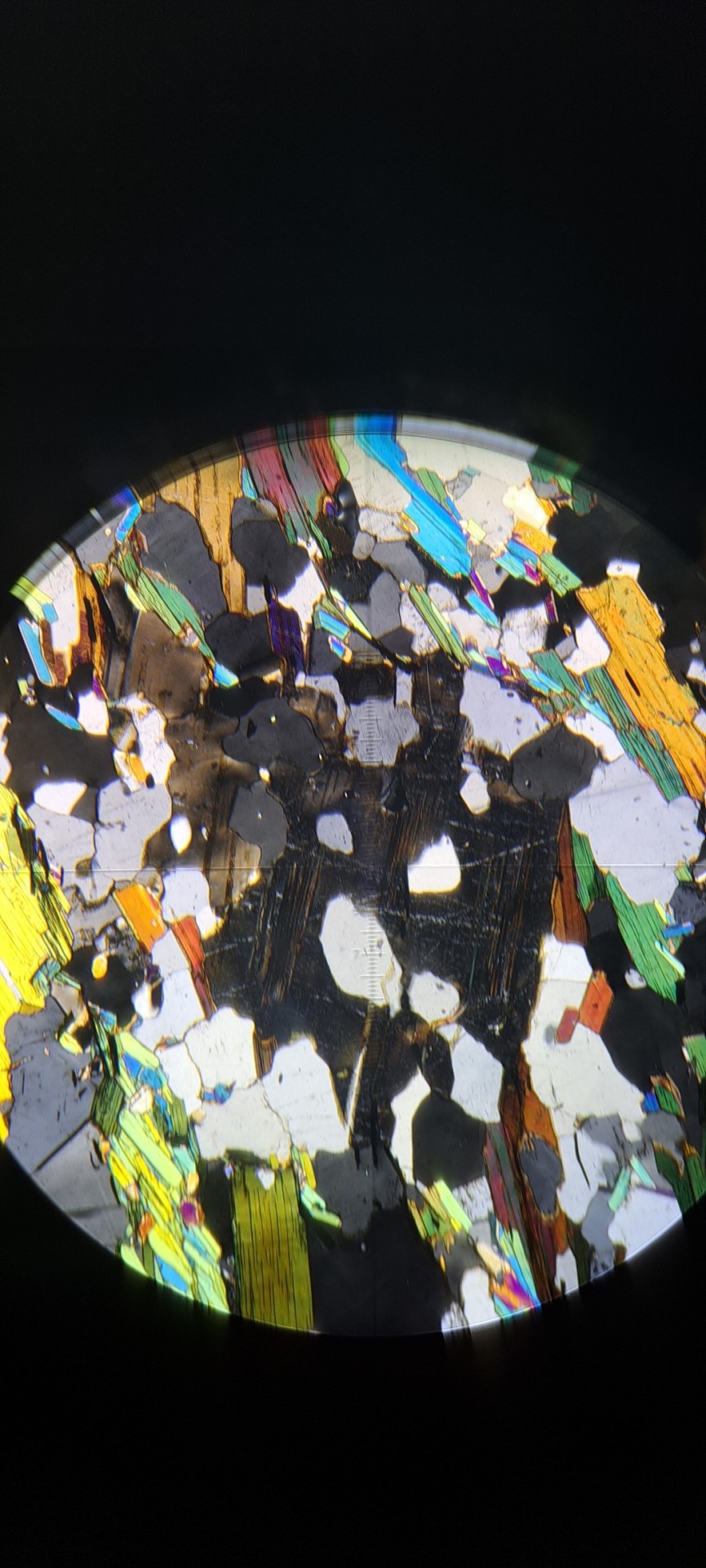
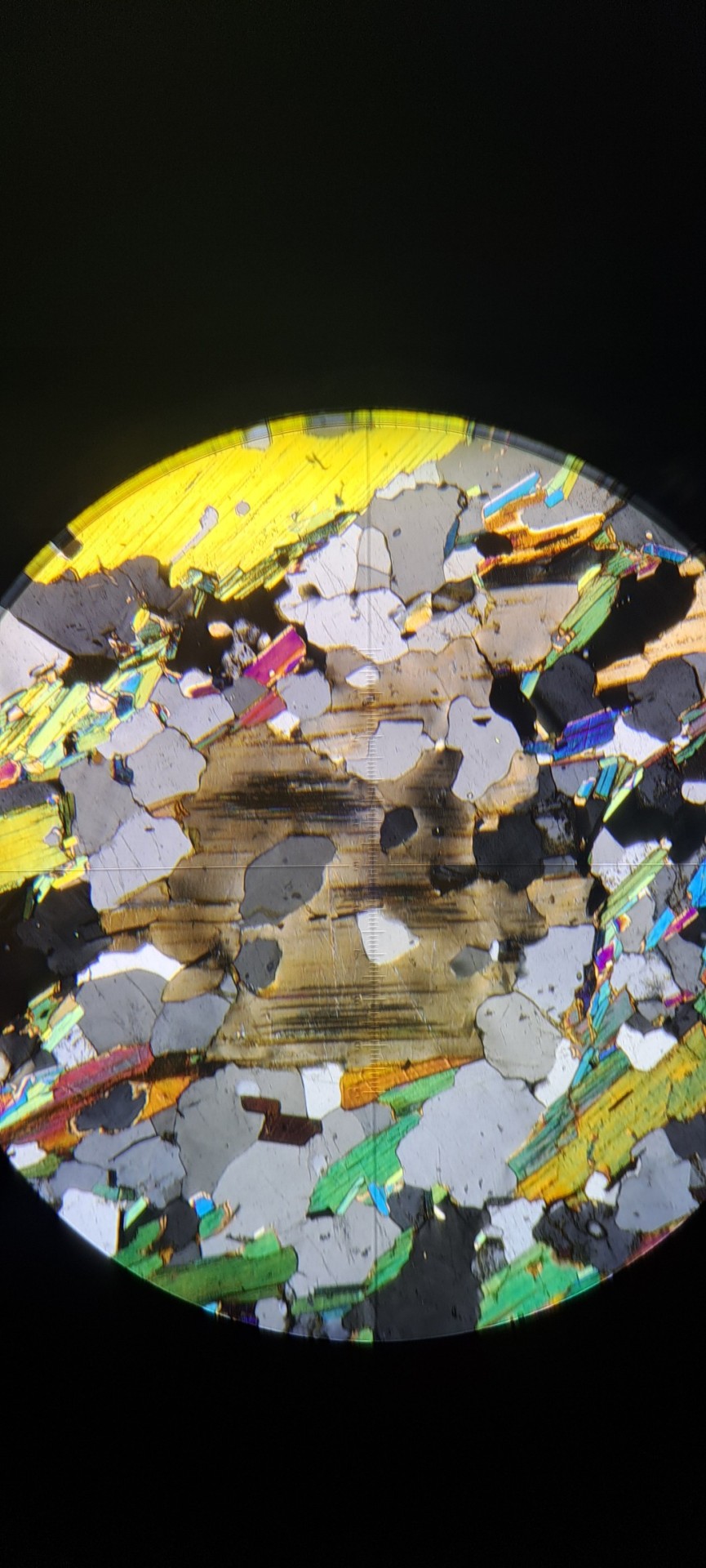
ummm what the fuck are YOU?
#my instinct was biotite but biotite dont look like that#i dont see any birds eye extinction!!#looks like low first order colors??#colorless under ppl i think#i think low relief?#my thin sec should only have like.. a few minerals in it#confirmed are ilmenite monazite zircon plag quartz biotite muscovite#but this doesnt look like... any of that?#tuna talks geology#mineralogy#ppl#xpl#thin section#ec 501 sample
4 notes
·
View notes
Text
when the mentals are illnessing
#ohhhhhhhhhhh ohhhhhh ohhh#i exist in geometric planes#call me biotite the way i easily break between the layers of myself#ohhhh ysahhh babyyyy geoscience at work
1 note
·
View note
Text
🪨🔍🧙
Vide quod emittitur iactabantur luminis quod est iactus!

1 note
·
View note
Text
i've officially been in this lab for ✨eleven hours✨
#'your brain needs sleep!' my brain needs information#if i sleep how will i know what biotite looks like under a microscope. huh#how will i memorize thirteen chemical formulas. HUH#i'm probably going to bomb the theory section but that's the least important#i just need to get a passing grade in this class. like preferably a c- but at least a PASS
1 note
·
View note
Text


Biotite in weathered pyroxene!
Cross-polar (top), plane polar (bottom), 40X magnification
116 notes
·
View notes
Text
ANUBIS



WHO IS HE?
Anubis, also known as Inpu and Anpu in Ancient Egyptian mythology, is the god of funerary rites, protector of graves, and guide to the Underworld, in Ancient Egyptian mythology, usually depicted as a canine or a man with a canine head.
BASIC INFO:
Appearance: in Egyptian mythology, Anubis is typically depicted as a jackal-headed deity or a man with the head of a jackal. He is often depicted wearing a loincloth and holding a flail or a pair of scales. The jackal head represents Anubis' role as the guide to the Underworld, while the flail and scales represent his role as the judge of the dead. Some later representations of Anubis also show him holding a scepter, which is a staff symbolizing power and authority.
Personality: he is often portrayed as a serious and mysterious figure. He is known as the guide and guardian of the Underworld, and he is responsible for helping the dead on their journey to the afterlife. Anubis is also depicted as just and fair, using his scales to weigh the heart of the deceased against the Feather of Ma’at to determine their worthiness for the afterlife. Despite his association with death and the Underworld, Anubis is also seen as a protector and guide for the living, and he is believed to help those who call upon him for protection and guidance.
Symbols: flail, crook, sceptre, and mummy gauze
God of: the dead, mummification, embalming, the afterlife, and tombs
Culture: Egyptian
Plants and trees: star anise, benzoin, cloves, cardamom, frankincense, myrrh, rosemary, cypress, pomegranate, cedarwood, blue lotus, juniper, lilies, and black roses.
Crystals: black obsidian, onyx, jet, garnet, smoky quartz, babingtonite, augite, alabandite, agate geode, petrified palmwood, brochantite, agate, labradorite, trolleite, melanite, dendritic opal, larvikite, biotite, fire opal, merlinite, bloodstone, hematite, and black tourmaline.
Animals: jackal, dog, flies, scarab beetle, Ibis bird, and snake
Incense: cinnamon, sage, frankincense, cedarwood, pomegranate, myrrh, copal, dragons blood, and vanilla
Colours: black, gold, green, and red
Number: 13
Zodiac: Scorpio
Tarot: Death
Planets: Pluto
Days: Monday, Thoth (Thuty) Festival, Opening of the Mouth ceremony, Festival of the Divine Birth, Nile Flood Festival, Festival of the Dead, and Festival of the Jackal
Parents: Ra (his father originally), Hesat (mother), Bastet (sometimes referred to as his mother), Osiris (his father in later stories), and Isis (his mother in later stories).
Siblings: Horus, Babi, Sopdet, Wepwawet, and Bata
Partner: Anput and Nephthys
Children: Kebechet
MISC:
• Flail: the flail is associated with Anubis because it was believed to have been used by him in the process of mummification. In ancient Egyptian mythology, the flail was a tool used to separate the body of the deceased from its wrappings. It was also associated with the idea of balance and justice, as the flail had two heads that were believed to represent the balance of life and death. In some depictions, Anubis is shown holding a flail in his hands as a symbol of his role as a judge of the dead.
• Crook: it was a staff with a curved end and was used by shepherds to guide their flocks. In Egyptian mythology, the crook was associated with the god Osiris and later with Anubis as well. It was believed to represent Anubis' role as a shepherd of souls, guiding the deceased through the afterlife and protecting them from danger. Additionally, the crook was seen as a symbol of authority and power, as the pharaohs were often depicted carrying one as a sign of their divine rule.
• Sceptre: in ancient Egypt, a sceptre was a staff that was carried by the pharaohs and gods to symbolize their power and authority. For Anubis, his sceptre was known as the Pesesh-kef Sceptre, and it represented his role as a guide and protector of the dead. The Pesesh-kef was a symbol of his status as a god and was used to perform rituals and ceremonies related to the afterlife. It was also believed to have healing or magical properties and was sometimes buried with people to protect them on their journey through the afterlife.
• Jackal: Anubis is often depicted with the head of a jackal, which is one of the reasons why jackals are associated with him. Jackals were considered scavengers and were known to be present in the deserts where many Egyptian burials took place. For this reason, they were believed to have been closely associated with death and the afterlife. The jackal was also said to have the ability to navigate the underworld, which further strengthened its association with Anubis, who was considered the guide and protector of the deceased in the afterlife.
• Mummy gauze: the material used to wrap and bind the mummies of the deceased. Anubis, as the god of mummification and the afterlife, was closely associated with the practice of mummification and often depicted holding rolls of mummy gauze as a symbol of his role. In addition, mummy gauze was believed to have magical or protective properties, and some Egyptians would use it as a talisman to keep themselves or their loved ones safe from harm. As a result, mummy gauze became a potent symbol of Anubis' power and connection to the underworld.
• The colour black: often associated with death and the underworld, this is likely because of the dark, fertile soil of the Nile River banks, where many Egyptian burials took place. Anubis, as the god of death and the afterlife, was closely associated with the Underworld and the process of mummification, which required the use of black resin and tar. As a result, the color black became a powerful symbol of Anubis and his domain, and was often used in paintings, carvings, and other representations of the god.
FACTS ABOUT ANUBIS:
• He likes metal music (especially black metal), dark crystal jewelry, gothic style, and dark coloured sports cars.
• In the Egyptian Book of the Dead, it is said that Anubis weighs the heart of the deceased against the Feather of Ma’at to determine their worthiness for the afterlife.
• Anubis was regularly invoked for protection as well as vengeance.
• He helped Iris bring Osiris back from the dead.
• His time of day is dusk.
• Anubis is very caring and kind to his worshipper.
• The name “Anubis” is the Greek form of the Egyptian name “Anpu” which means to decay.
• He is not a demon or evil entity.
• Anubis was said to be the creator of embalming.
• The Greeks associated Anubis with Hermes, the Greek god who guided the dead to the afterlife. The two would be joined together to create Hermanubis, making him more accessible to non-Egyptians.
• A very sweet entity and only wishes to help guide people in the right direction.
• He knows the date of everyone’s death and may be petitioned to reveal it.
• Anubis is one of the oldest Egyptian gods.
• He is represented by the colour black.
HOW TO INVOKE ANUBIS:
Connect with Anubis as you would any other deity—with profound respect and gratitude. He selects devotees who are willing to face their shadows, and who aren’t afraid of spirts and death. Come to him with a pure heart and pure intentions.
To work with him, you can: read about him, create sacred altar space for him, leave offerings for Anubis in his sacred space, call him by his real name Anpu (to decay), research the mummification process and purpose, explore your beliefs about death, do shadow work and ritual work with him, and visiting cemeteries.
PRAYER FOR ANUBIS:
"Oh great and powerful Anubis, Lord of the Dead and guide of souls, I call upon you now in this moment. I honor and respect your wisdom and strength, and I seek your guidance and protection on my journey through this life and into the next.”
“Please bless me with your presence and wisdom as I embark on this new path. Show me the way to make the choices that will lead to a good and honorable life, and give me the courage to face the unknown with bravery and confidence.
I offer this prayer to you with gratitude and reverence. Hail to you, Lord Anubis.”
SIGNS THAT ANUBIS IS CALLING YOU:
• Spiritual signs, such as meditative visions or dream visitations.
• Seeing black dogs and bones.
• A strong feeling of connection to Anubis or the Egyptian pantheon.
• Finding yourself increasingly drawn to topics related to death, the afterlife, or spirituality.
• A sense of being guided or protected in times of difficulty or distress.
• Finding objects related to death, burial, or the occult in unexpected places.
• Experiencing unusual synchronicities or coincidences related to the god.
• Having a strong desire to learn more about the Egyptian pantheon or the lore surrounding Anubis.
OFFERINGS:
• Cool water.
• Strong liquor, like rum.
• Spicy foods.
• Dark and bitter chocolate and beer.
• Practicing divination.
• Strong incense: frankincense, cedarwood, and myrrh.
• Black coffee.
• Shadow work (only if you’re emotionally prepared for it).
• Pomegranates.
• Feathers.
• Aged cheese.
• Sourdough.
• Red meat: beef (especially steak), pork, lamb, and goat.
• Bitter chocolate.
• Cypress oil.
• Bones and skulls.
• Pumpkin spice.
• Locks and keys.
• Bread.
• Crystals: black obsidian, onyx, jet, garnet, smoky quartz, labradorite, bloodstone, and hematite.
• Scales.
• Logical puzzles.
• Dog things.
• Bandages.
• Karkadeh.
DEVOTIONAL ACTS:
• Honour the dead and your ancestors
• Leaving flowers on graves.
• Support orphans and the homeless.
• Act as a guide for someone.
• Live your life as if it was your last (mindfully).
• Volunteer in cleaning cemeteries or in your local mortuary.
• Dress in neutral and dark colours.
• Collect animal bones. Clean then and breathe life into them (do so ethically, killing animals for bones is a blatant disrespect for Anubis, the animal, and the law).
• Adopt unwanted animals (the ones who are critically ill or are of old age) and give them the best life before they pass.
• Wearing black clothing in his honour.
• Volunteer or donate to local dog shelters.
• Research him.
• Get involved with spirit work.
• Practice divination; in the Papyri, Anubis is noted to be an intermediary for divination.
• Get into herbology: his priests were skilled herbal healers and dealt with many herbs during the mummification process.
• Draw, paint, or sculpt something in his honour.
#fyp#fypシ#fypシ゚viral#fypage#fyppage#tumblr fyp#satanism#witchcraft#deity#deity work#anubis deity#god anubis#egyptian mythology#ancient egypt#egyptian deities#occult#information#masterlist
58 notes
·
View notes
Note
Please tell us more about characters assigned rocks 👀
Oh no my trap card! long post time!
Okay, the rocks that I assign to characters depend on a lot of different factors (mostly vibes), am I planning aesthetic matches? eg. rubies and garnets for technoblade? Narrative matches? eg. gypsum for dream? Character matches? vibe or function? eg. feldspar for techno, muscovite for phil? The result is a pile of different rocks assigned to each of my special little guys, some with more uhh tenuous connections than others.
Let's go over the rocks I assigned to the syndicate (+dream) and why:
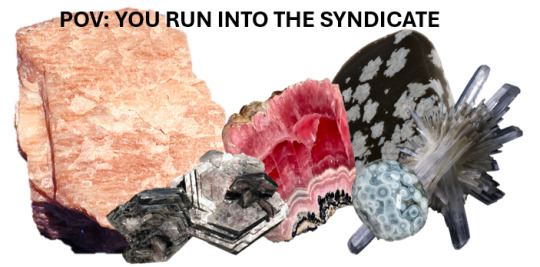
First up, Technoblade and K-Feldspar:
This is one based mostly off of vibes. It's one of my favorite feldspars and Technoblade is my favorite guy. And orthoclase feldspar, or K-feldspar, is PINK.

But I am nothing if not able to make explanations for things that were initially just based on vibes. Let's look a little beyond, shall we? Feldspars are known for being very structured in the sense that they have two defined cleavage planes at 90 degrees to each other, making rectangular blocks with irregular ends. Techno, to me, is the pillar of support and structure to his friends, so a cleavage pattern that reflects that is fitting. (in contrast, I think Ranboo's character could be represented by obsidian, which is glass-like). Beyond that, feldspar is the most common mineral in the earth's crust, making up about 60% of the crust. In terms of Technoblade, this could represent his impact on the mcyt community, his character's role in driving many major plotlines, or if you like the old immortals hc, a lasting impact on the world throughout history. (If you like the old immortals theory, please consider pairing feldspar techno with olivine philza! Olivine is a green mineral, the most abundant in the upper mantle!)
A couple other notes: K-feldspar is pink because it has iron mixed into it, but it's named for the high concentration of potassium. Potassium is also known for: exploding! Also. It's PINK. But, generally I do tend to associate feldspars with Philza instead of Technoblade, because feldspars are what makes moonstone and labradorite, and I tend to associate moon and star mythos and symbolism with Phil.
Philza and muscovite:
I know I just wrote muscovite, but I was thinking of fuchsite, which is a chromium-rich muscovite!
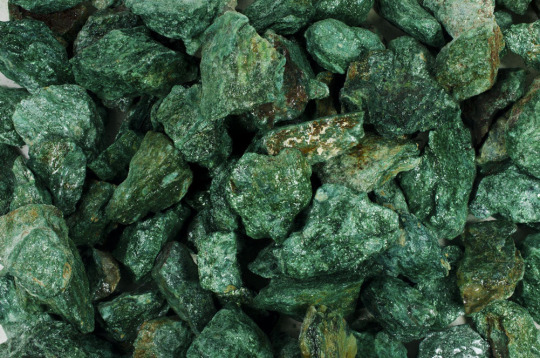
I can't really put a finger on why I feel that muscovite fits Phil so well, but I think the micas suit him. Maybe it's something about how they used to use Mica to make windows (Muscovy glass, from Moscow, gives muscovite it's name!), and I feel that Philza's builds and character act as windows into rich worldbuilding. Maybe it's something about the fact that micas are made of many many layers and Philza adds a depth to each of his characters (and even literal layers with the colorzas). Muscovite is generally clear and reflective, while biotite micas can be dark enough to be black even in thin sheets. both suit Phil in my opinion, but the inclusion of alluminum in muscovite sometimes gives it a metallic sheen. It can be thin and transparent sheets, but it's still durable and versatile as a material. Maybe that reminded me of how people always see Technoblade as the warrior, but Philza has been known as a survivor for just as long if not longer.
Connor and Ocean Jasper:
I'm going to be honest. I know nothing about this guy.
Ocean jasper is blue. He's blue. What more is there to say?
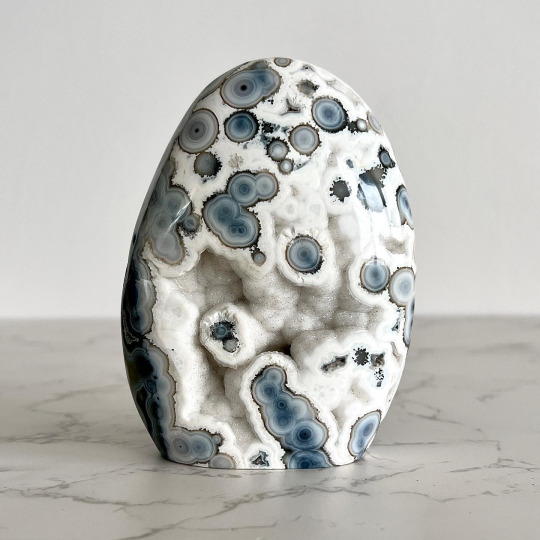
Ocean jasper, or orbicular jasper, is a pretty rare stone! The main reason I assigned this to C!connor, other than the color, is that from the little I knew of his character, he was still somehow everywhere. That sums up my understanding of jasper pretty well too! It's a silicate mineral, defined more by its crystal structure than its composition, but some people still just call it chalcedony or quartz, and jasper is everywhere with lots of varieties! It reminded me of seeing all of C!connor's appearances with his normal skin and all the time traveler theories. The same Connor under different names, the same quartz under different names.
Niki Nihachu and Rhodochrosite:
This is the one I feel fits the best, actually! Yes I did initially think of it because it's pink, but Rhodochrosite is an extremely cool mineral and I think the fact that people think of it as "just pink" reflects perception of Niki's character compared to her true depth.

Just look at the versatility of it! From crystals to roses to speleothems. Rhodochrosite has been used for manganese, which is used in steel and aluminum alloy production, or to concentrate silver. In both cases the process is destructive and creates a lot of byproducts, which reminded me of the hurt caused to C!Niki through the revolution, and the way she was spoken over and ignored after. Another aspect of rhodochrosite is that it generally forms in hydrothermal veins. High pressure formation conditions to create this beautiful mineral reflect, to me, Niki's arc of finding herself again.
Ranboo and Snowflake Obsidian:
I think any obsidian fit's C!Ranboo well, but you know I had to choose snowflake obsidian because it's black and white.
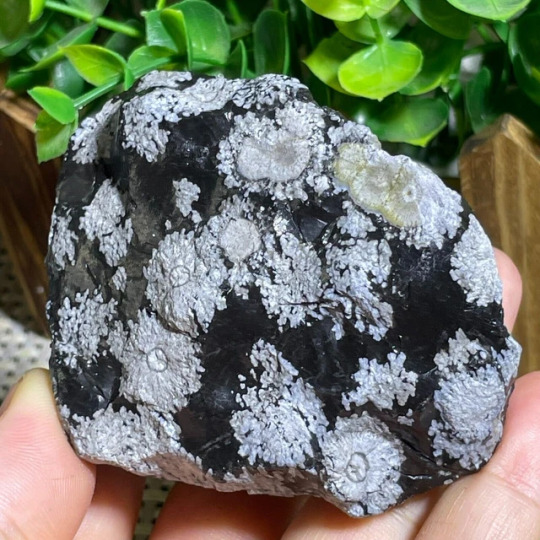
Ranboo's fragmented memory made me think that a fracturing material would be a good fit, and obsidian has the properties of glass. It is also not lost on me that obsidian forms when magma or lava hit water. However, snowflake obsidian forms through the process of devitrification (vitri-, like vitreous, meaning glass-like), where glasslike substances become crystalline. The white material is cristobalite, a silicate material that forms at high temperatures. What this means is that snowflake obsidian is not as glass-like as other types of obsidian, just as Ranboo's memory loss is not exactly what it first appears to be either.
Dream and Gypsum:
Gypsum, in some forms called selenite, is a pretty well-known mineral. However, many of the forms are known under different names so people do not realize that they are all the same mineral.
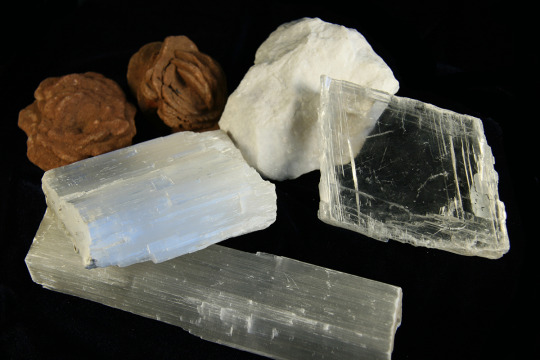
Gypsum can form roses, clear selenite, reflective satin spar, the sands of white dunes, rock, crystals, and more. It's used in construction, to make chalk, to make buildings, to analyze mineral thin sections, to measure hardness on the Mohs scale, and to charge crystals by those that believe in spiritual properties of minerals. I see these many different forms as parallels to Dream's many faces on the server, real and perceived. Many different names given to different forms of the same person. I think the many used of gypsum also reflect the perception of Dream by the rest of the server. Gypsum is attributed power by some (is Dream the most powerful villian on the server?) and use by geologists and builders (Is Dream a way to get the revival book? Is he an ally?), but one of the main qualities is that it has a very low hardness, and is very easily broken. Is the role and name assigned to Dream, by others and by himself, more than he can fulfill without breaking?
#vpoc yells#vpoc writes#now i need a new tag that's 'vpoc talks about rocks for way too long'#dsmp#rockposting#the syndicate#uhhh I don't know what tags to use for this tbh#long post#If someone wants I can list some vibe-based rocks for my guys too
56 notes
·
View notes
Text






Mica
There are still 14 gems from the Biotite Subgroup missing and I decided I wasn't going to sketch more until I organize better about them. Celadonites are sketched but I am too, unhappy about them.
Only Brittle Mica(s), Dioctahedral and Trioctahedrals are finished so it's at least something. It's still going to take a while until I sketch a design I'm happy with for the rest so I might as well finally post this.
53 notes
·
View notes
Text
Rock Swag Tournament Round 1: Igneous Rocks Part 3
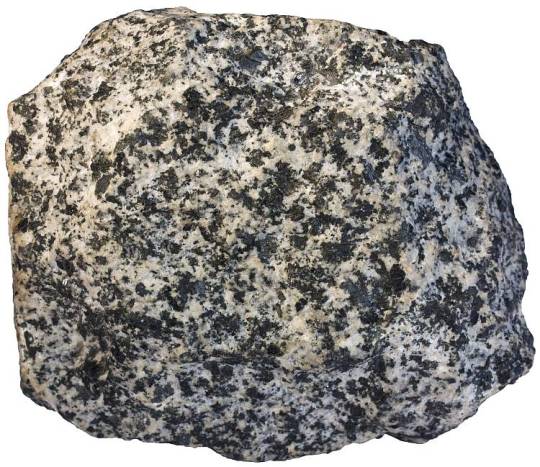
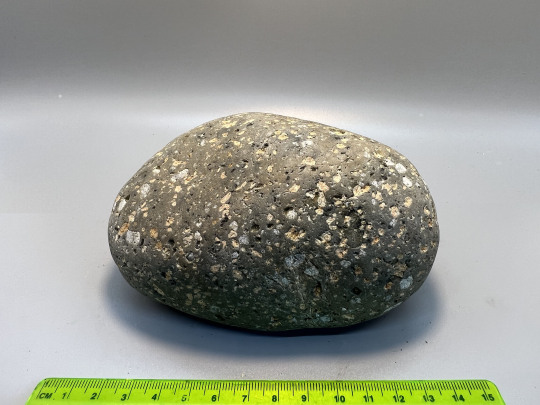
Diorite and andesite aren't the same rock, but they do have the same composition!
Both diorite and andesite are intermediate in composition, meaning they contain some mafic and some felsic minerals. In fact, diorite and andesite are considered, compositionally, the middle ground between felsic rocks like granite (phaneritic) & rhyolite (aphanitic) and gabbro (phaneritic) and basalt (aphanitic).
In diorite, the white minerals you see are mostly plagioclase (specifically sodium-rich feldspar). The black minerals are mostly biotite and amphibole, with maybe some pyroxene. While you can't see the individual mineral grains in andesite, the overall composition is just about the same as diorite.
And of course, that means if the difference is not composition, it is texture! Although it would probably be more correct of me to say that the difference is in where these rocks formed.
Diorite is an intrusive, phaneritic rock. It formed slowly so you can see the mineral grains that grew over a long period of time.
Andesite is an extrusive rock, which generally means it is aphanitic (fine-grained). However, this particular sample is porphyritic in texture! The white minerals in this sample were crystallized before the andesitic magma that made this rock was erupted. If you zoom in, you might be able to see that the andesite groundmass (the rock that these white minerals are embedded in) is aphanitic.
And, in cases like this, when andesite is porphyritic (which is pretty often), you will often hear it called an "andesite porphyry."
I would also be remiss not to mention that I have often heard these rocks referred to as various popular cookies! Diorite is of course an oreo (some may consider plagiogranite the oreo rock, but I give diorite this distinction) and andesite porphyry is a chocolate chip cookie.
123 notes
·
View notes
Text



Thin sections—
Dominant Garnet/Biotite, Quartz, Feldspar
-took these in my mineralogy and petrology class, I love the way sandstones look like beaches-
15 notes
·
View notes